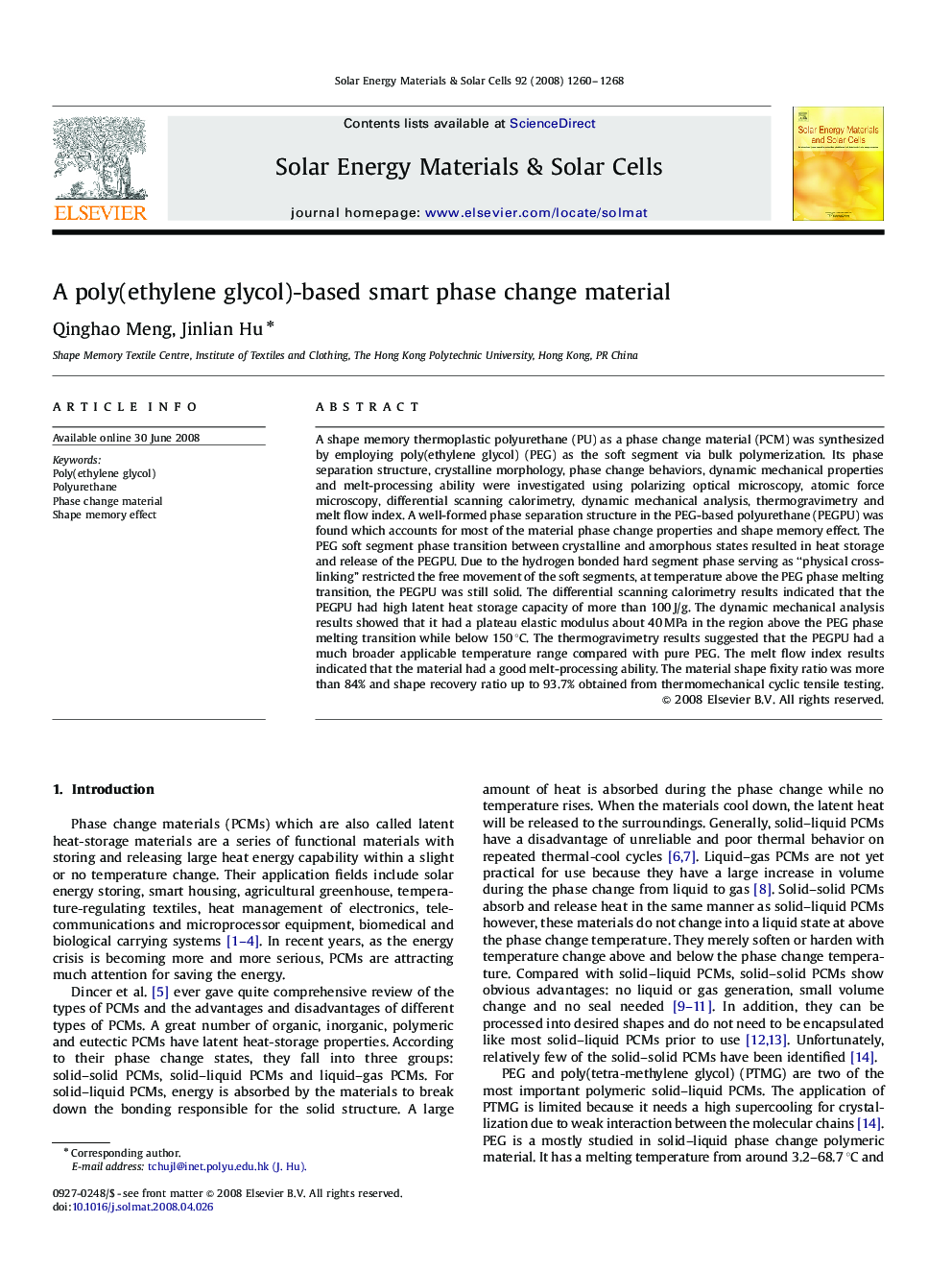| Article ID | Journal | Published Year | Pages | File Type |
|---|---|---|---|---|
| 80439 | Solar Energy Materials and Solar Cells | 2008 | 9 Pages |
A shape memory thermoplastic polyurethane (PU) as a phase change material (PCM) was synthesized by employing poly(ethylene glycol) (PEG) as the soft segment via bulk polymerization. Its phase separation structure, crystalline morphology, phase change behaviors, dynamic mechanical properties and melt-processing ability were investigated using polarizing optical microscopy, atomic force microscopy, differential scanning calorimetry, dynamic mechanical analysis, thermogravimetry and melt flow index. A well-formed phase separation structure in the PEG-based polyurethane (PEGPU) was found which accounts for most of the material phase change properties and shape memory effect. The PEG soft segment phase transition between crystalline and amorphous states resulted in heat storage and release of the PEGPU. Due to the hydrogen bonded hard segment phase serving as “physical cross-linking” restricted the free movement of the soft segments, at temperature above the PEG phase melting transition, the PEGPU was still solid. The differential scanning calorimetry results indicated that the PEGPU had high latent heat storage capacity of more than 100 J/g. The dynamic mechanical analysis results showed that it had a plateau elastic modulus about 40 MPa in the region above the PEG phase melting transition while below 150 °C. The thermogravimetry results suggested that the PEGPU had a much broader applicable temperature range compared with pure PEG. The melt flow index results indicated that the material had a good melt-processing ability. The material shape fixity ratio was more than 84% and shape recovery ratio up to 93.7% obtained from thermomechanical cyclic tensile testing.
